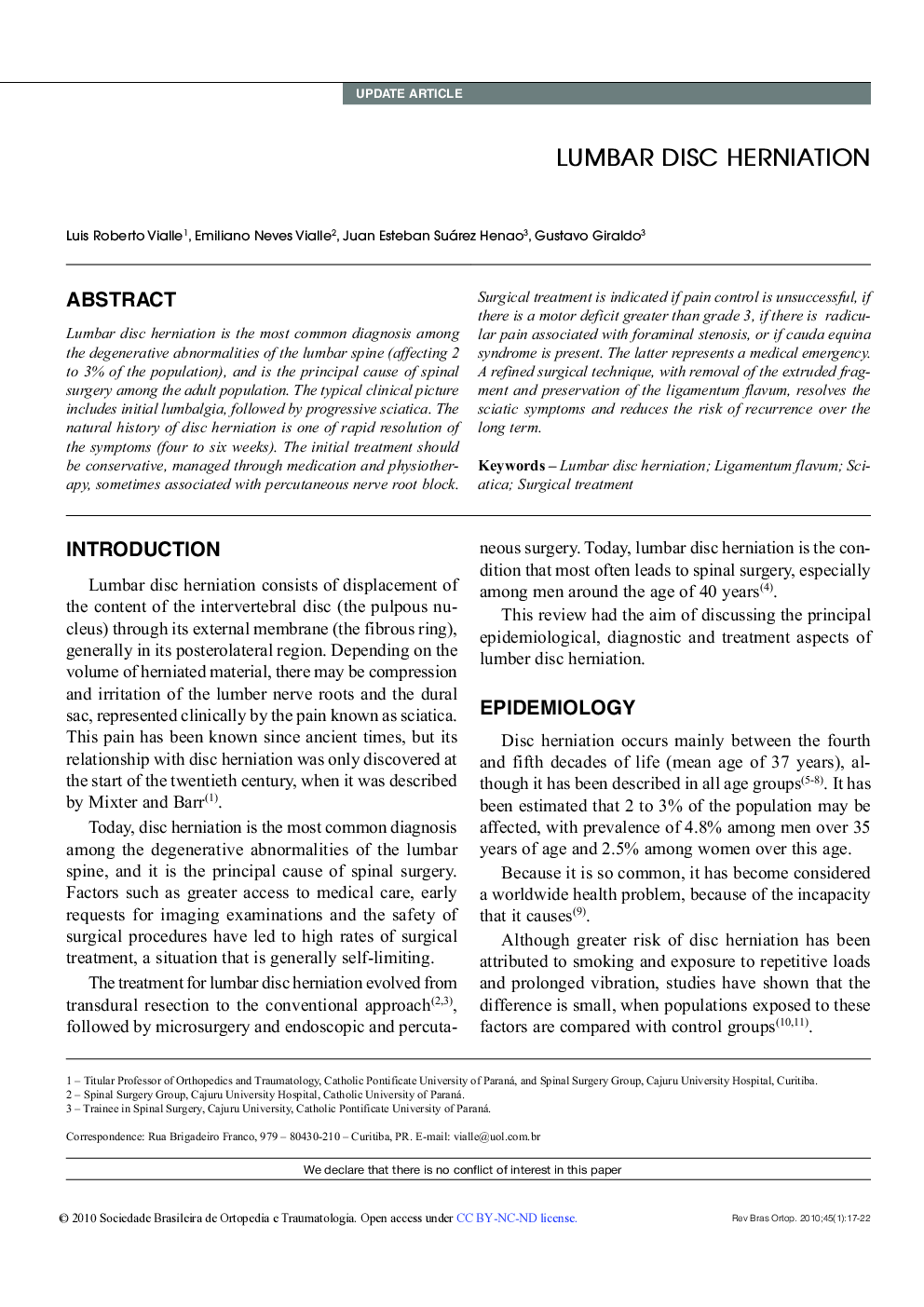| Article ID | Journal | Published Year | Pages | File Type |
|---|---|---|---|---|
| 2713910 | Revista Brasileira de Ortopedia (English Edition) | 2010 | 6 Pages |
ABSTRACTLumbar disc herniation is the most common diagnosis among the degenerative abnormalities of the lumbar spine (affecting 2 to 3% of the population), and is the principal cause of spinal surgery among the adult population. The typical clinical picture includes initial lumbalgia, followed by progressive sciatica. The natural history of disc herniation is one of rapid resolution of the symptoms (four to six weeks). The initial treatment should be conservative, managed through medication and physiotherapy, sometimes associated with percutaneous nerve root block. Surgical treatment is indicated if pain control is unsuccessful, if there is a motor deficit greater than grade 3, if there is radicular pain associated with foraminal stenosis, or if cauda equina syndrome is present. The latter represents a medical emergency. A refined surgical technique, with removal of the extruded fragment and preservation of the ligamentum flavum, resolves the sciatic symptoms and reduces the risk of recurrence over the long term.
